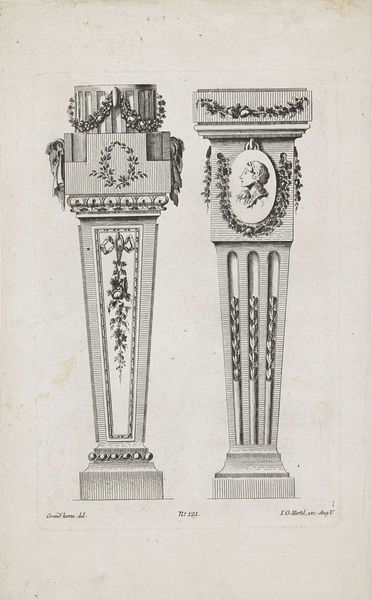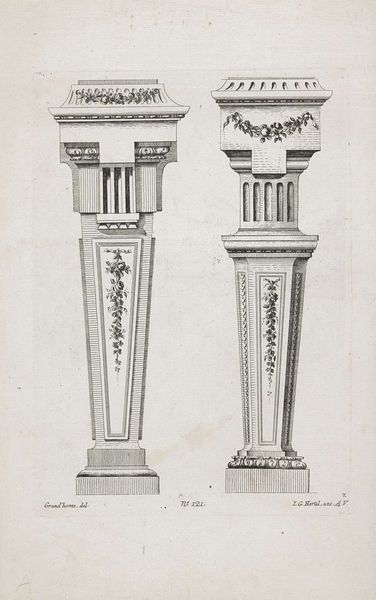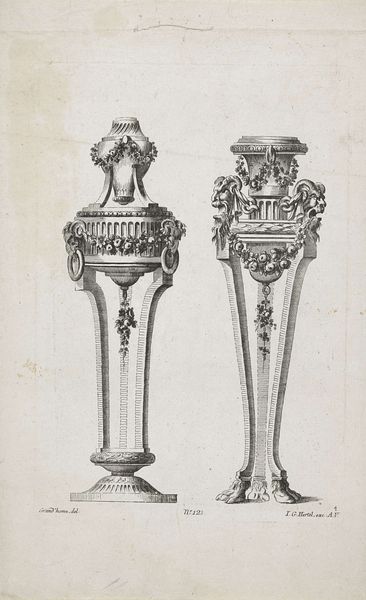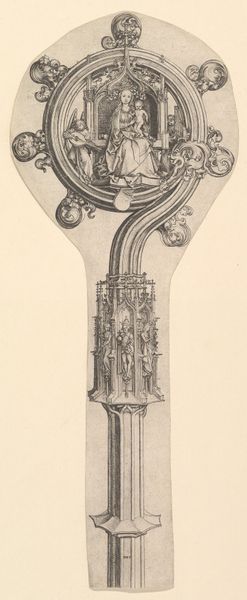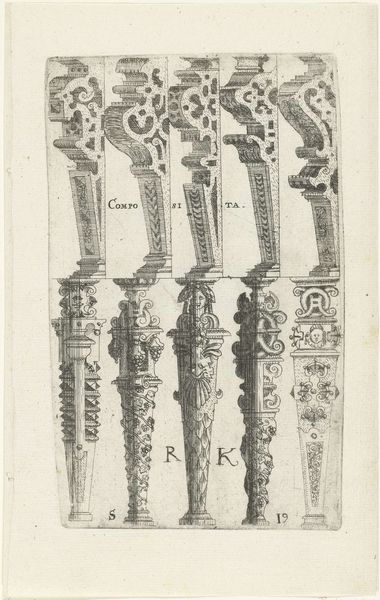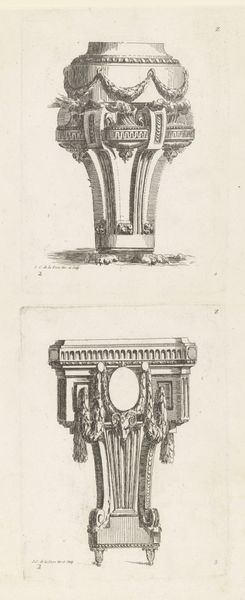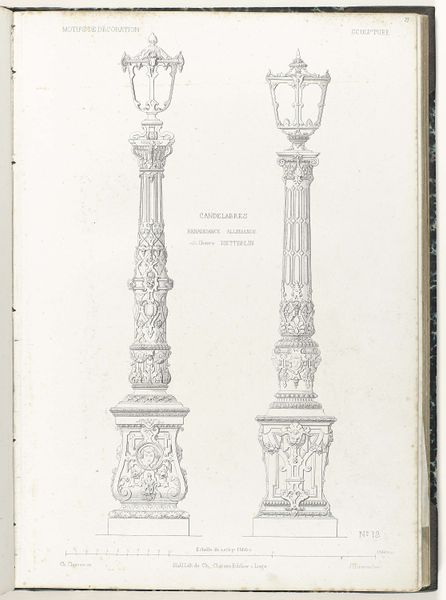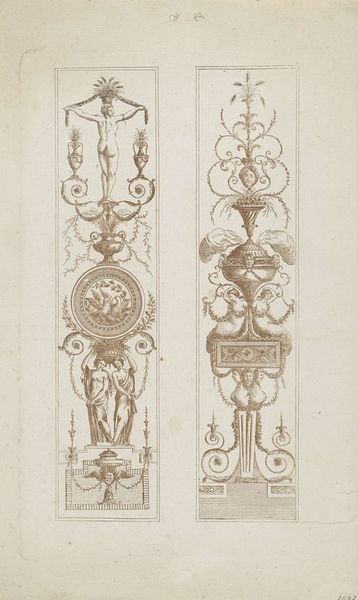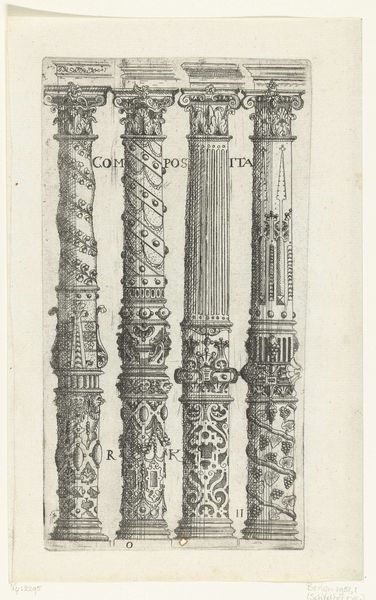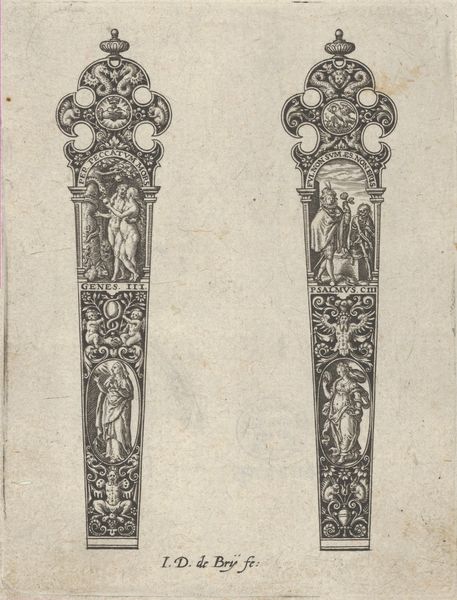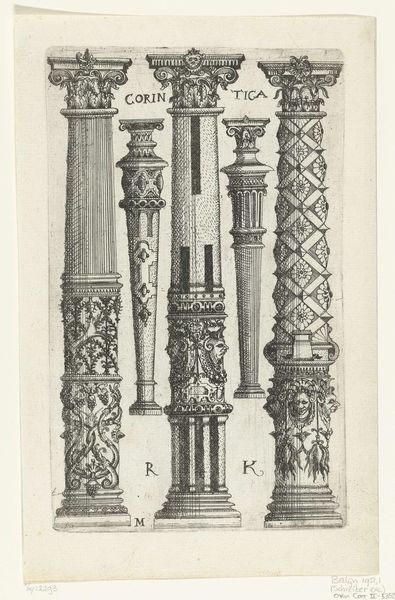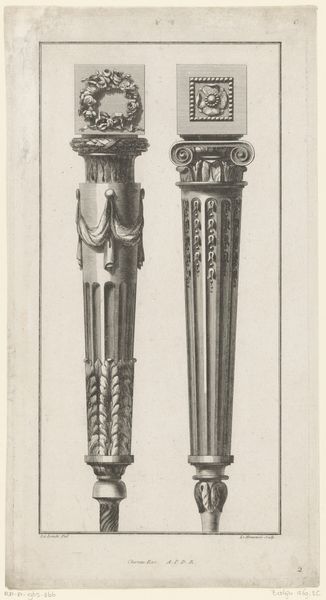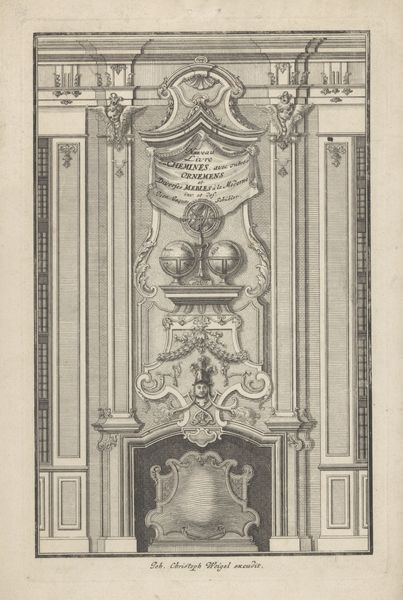
Dimensions: height 298 mm, width 201 mm
Copyright: Rijks Museum: Open Domain
These two pedestal designs were created by an anonymous designer, made visible by the hand of I.G. Hertel, who engraved the image. Though we don't know the original intention, this print allows us to imagine the process of crafting elaborate architectural features. These objects, which would typically be made of carved stone or wood, were drawn with incredible detail and precision. The pedestals have classical elements of fluted columns, moldings, and garlands, which add a sense of historical weight. The anonymous designer had to translate these grand elements into paper, with the engraver following suit, a skilled craft that required precise handwork. These pedestal designs speak to a broader culture of design, where the exchange of knowledge and the circulation of patterns played a vital role in disseminating new aesthetics across society. So, next time you encounter design, think about the skilled labor and cultural exchange embedded in creating visually striking designs.
Comments
No comments
Be the first to comment and join the conversation on the ultimate creative platform.
